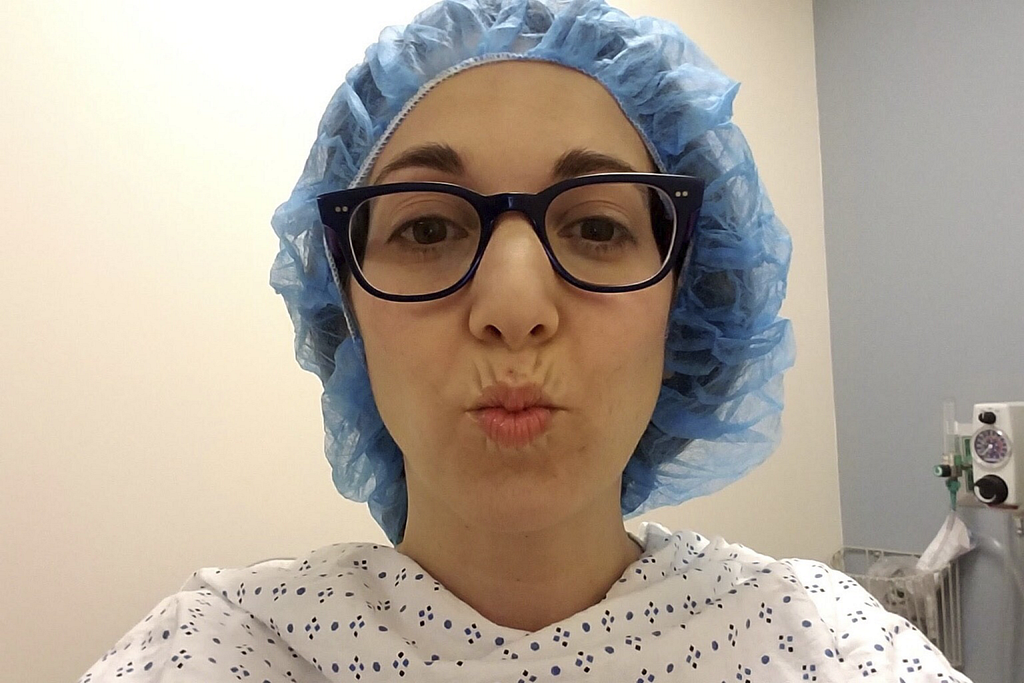Planning for a Family While Facing Breast Cancer Treatment
When I was diagnosed with breast cancer at the age of 36, one of the first questions I asked my breast surgical oncologist is whether I’ll be able to have children. My then boyfriend sat next to me in the appointment, hands forming a teepee over his nose, getting reassurance that preserving my fertility is both possible and safe to do prior to any cancer treatment.
We would soon learn that my breast cancer is hormone-receptor positive, which means that estrogen and progesterone fueled my tumor’s growth. For this sub-type, the recommendation is to take hormone therapy that blocks abhorrent breast cancer cells from receiving the hormones they need to grow and is a way to help prevent recurrence after chemo and radiation (i.e. active treatment). Generally the medical oncology community recommends staying on hormone therapy for at least 2 years after active treatment before stopping to have a child, and then going back on it after some time. The guidelines also recommend staying on hormone therapy for 5 to 10 years. It is not safe to take hormone therapy while pregnant.
There were other factors driving my decision to preserve fertility. Because of my young adult age, I learned the care team would be especially aggressive in my treatment plan. Breast cancer tends to grow faster in pre-menopausal women, so the risk of spreading and/or recurring typically is higher than for the post-menopausal group. I was also facing chemotherapy, which would damage my eggs.
My breast surgeon referred me to a fertility clinic that gives extra special care to patients with cancer. He and the reproductive endocrinologist at the fertility clinic collaborated on a plan to help me reach my goal of fertility preservation all the while keeping me safe from promoting breast cancer growth.
At the fertility clinic, I met with the financial counselor who connected me with the Livestrong Foundation to cover the cost of my fertility medications, which can run upwards of $7,000 to $8,000. Prior to my breast cancer diagnosis, I was an otherwise healthy woman and therefore, enrolled in the catastrophic, or high deductible, health insurance plan. Having the Livestrong Foundation take this financial burden off of me in a time of extreme stress, when my medical bills were slowly stacking up, gave me a moment of reprieve. I’m so grateful.

Over the next two weeks, I prepared my body for the egg retrieval under the close guidance of the fertility clinic. I was also faced with a big decision: to freeze eggs or embryos. The reproductive endocrinologist advised us to make embryos rather than freeze eggs because embryos tend to withstand the freezing process better. In the end, we were able to create and freeze five viable embryos.
Looking back at my concerns before breast cancer, I had royally stressed over my biological clock to have children given that I was in my mid-30s. Now, after cancer, I realize there is some blessing here. A year and a half later, with active treatment behind me and doing just fine on the hormone therapy, my partner and I are now engaged, planning a wedding and rediscovering a content life together without cancer being so front and center all the time. Through their financial support, the Livestrong Foundation helped us buy time to start a family when we are ready. And we’ll be ready after we take one heck of a once-in-lifetime honeymoon–the kind of trip that would be hard to do after having children. Carpe diem!
Erin, breast cancer survivor
Planning for a Family While Facing Breast Cancer Treatment was originally published in Livestrong Voices on Medium, where people are continuing the conversation by highlighting and responding to this story.